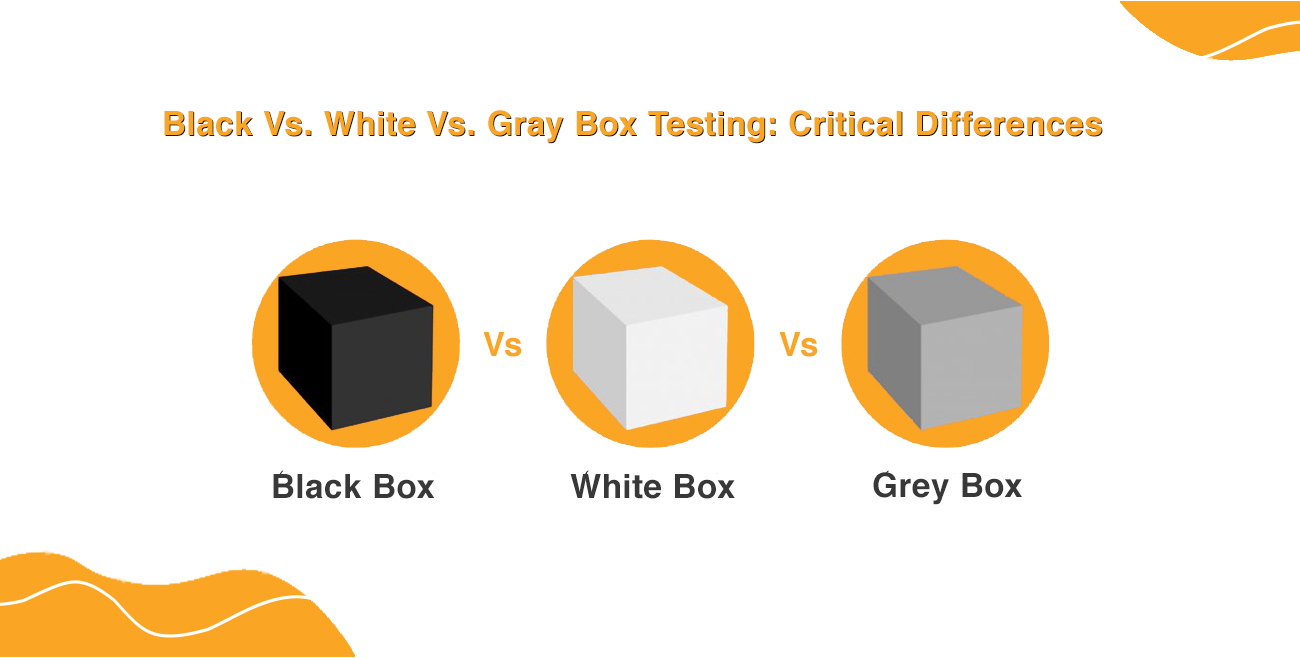Testing is a methodical examination of a software product or service that evaluates its compliance with specifications, documentation, and other types of available information. Various testing methods are used to test different systems under various conditions. This article discusses how testers perform their day-to-day tasks: black-box, white-box, and gray-box.
What is black box testing?
Black box testing is a software testing method by which test cases are based on requirements and functionality without any knowledge of internal structures or workings of the system. Instead, tests are based on externally visible behavior. In black-box testing, the tester tries to make inferences about internal structures or workings of the system when necessary. Key point: Black-box testing is not concerned with the system’s internal workings. It considers requirements and functional specifications only.
What is white box testing?
White box Testing is a software testing method in which an internal perspective of the system and programming skills are used to design test cases. Tests are based on visibility into the system’s internal structures. This knowledge can be derived through looking at the source code or design documentation for the system. Key point: White-box testing is concerned with the system’s internal workings. It requires programming skills.
What is gray box testing?
Gray box Testing uses a combination of both black-box and white-box testing methodologies. Testers are given limited information about the system’s internal structures being tested. With an incomplete understanding of the system, gray-box testers will develop tests based on requirements and functionality (white-box testing) and make inferences about the system based on observable inputs and outputs (black-box Testing).Key point: Gray-box testing uses both black-box and white-box testing methodologies. It is concerned with requirements, functionality, and the system’s internal workings under test.
Key differences between white-box testing, black-box testing, and gray-box Testing:
- Testing approach: White-Box Testing, Black Box Testing, and Gray Box Testing use different approaches to test a system. White-box Testing is concerned with the system’s internal structures, whereas black box testing focuses on requirements and functional specifications. It does not consider the internal structures of the system. Gray-box Testing uses techniques from both black-box and white-box testing. It is concerned with requirements, functional specifications, and internal structures of the system under test.
- Focuses on: White Box Testing focuses on what software does; Black Box testing focuses on what software is supposed to do, and Gray Box testing focuses on what a software is and how it does it.
- Visibility: In White-box Testing, visibility refers to the system’s internal structures. In Black-Box Testing, visibility refers to requirements and functional specifications. And in Gray-box testing, visibility refers to requirements, functionality, and internal workings of the system.
- Usecases: In White-Box Testing, code implementation defines use cases. In Black-box testing, they are defined according to the specifications. And in Gray-Box testing, a combination of both is used.
- Objectives: In White-Box Testing, objectives are reached by exploring the system’s internal structures. In Black-Box Testing, they are based on requirements and functional specifications. In Gray-box Testing, a combination of both is used.
- Categories: White Box Testing, Black Box Testing, and Gray Box Testing belong to different categories as white-Box testing is a software testing method, Black-Box Testing is a static testing technique, and Gray-box testing falls under the umbrella of dynamic testing.
- Techniques: In White-Box Testing, statement coverage, decision coverage, and path coverage are used to come with test cases. In Black Box Testing, use case and specification-based testing are used to develop test cases. Finally, Gray-Box Testing uses a combination of both techniques.
- Independence: In White Box Testing independence refers to the fact that components have no interrelationships, in Black-Box testing, it refers to the ability to modify each component without affecting other modules, and in Gray-Box testing, it refers to the ability to add new modules without affecting existing modules.
- Execution: In White-Box Testing, execution is done from the component top down. In Black Box Testing is done from the outside in, and in Gray-box testing, both techniques are used.
- Time Frame: In White-box testing, it takes a lot of time to develop test cases because internal structures of the components must be explored to develop test cases. Developing test cases in Black-Box testing takes less time because functional specifications are considered while creating test cases. In Gray-Box Testing, both internal structures and functional specifications of the system under test are considered while coming up with test cases.
Conclusion:
White-Box Testing, Black Box Testing, and Gray Box Testing are used to test a system in three different ways. In white-box testing, internal structures of the components are explored. In black-box testing, functional specifications of the system under test are considered while coming up with test cases. In contrast, gray box testing combines both techniques for exploring internal structures as wellas functional specifications of components to come up with test cases.

















